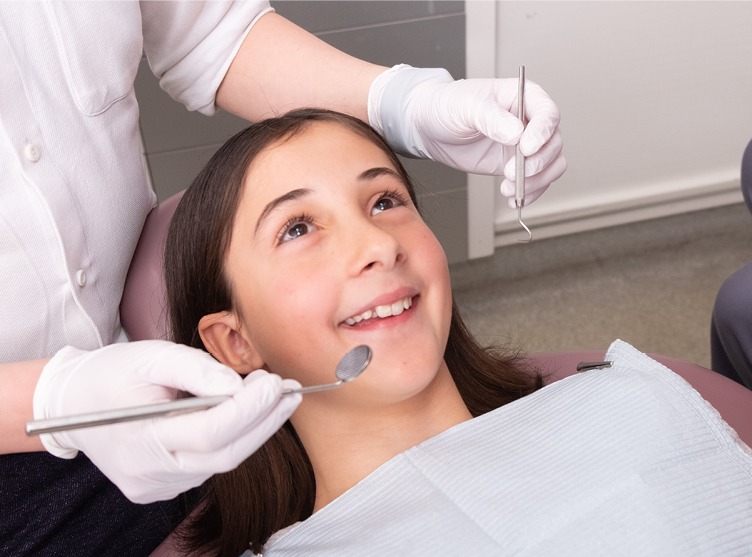Fascination About Legacy Orthodontics
Fascination About Legacy Orthodontics
Blog Article
The 9-Minute Rule for Legacy Orthodontics
Table of ContentsWhat Does Legacy Orthodontics Do?Top Guidelines Of Legacy Orthodontics8 Simple Techniques For Legacy OrthodonticsExcitement About Legacy OrthodonticsThe Ultimate Guide To Legacy Orthodontics
At Advanced Orthodontics, we offer individuals with a all natural treatment experience. Furthermore, we offer flexible therapy schedules, versatile repayment choices and a fun, delightful experience. braces. Telephone call ( 480) 357-4900 today to learn more and schedule a consultation.An orthodontist is a dental professional trained to detect, stop, and treat teeth and jaw irregularities. Orthodontists work with people of all ages, from youngsters to grownups.
Malocclusion, or misaligned teeth, can result in oral concerns, consisting of dental caries, gum tissue disease, and tough or agonizing eating. Not everybody is born with straight teeth. If you have a poor bite or large rooms between your teeth, you may want to consult a dental practitioner focusing on orthodontic care.
Fascination About Legacy Orthodontics
( Image Credit Score: DigitalVision/Getty Images) Orthodontists make use of repaired and removable dental tools, like braces, retainers, and bands, to alter the placement of teeth in your mouth. Orthodontic treatment is for oral problems, including: Uneven teethBite issues, like an overbite or an underbiteCrowded teeth or teeth that are as well much apartJaw misalignmentThe goal of orthodontic treatment is to improve your bite.
While you may think of orthodontists as mostly for youngsters or teens who need braces, they can correct oral problems at any type of age. Orthodontists participate in college, dental school, and orthodontic school.
All orthodontists are dental experts, yet not all dentists are orthodontists. Orthodontic residency programs supply intensive, concentrated direction for oral professionals. They focus on two locations: Just how to properly and securely relocate teeth Just how to appropriately lead development in the teeth, jaw, and faceOnce an orthodontist has finished training, they have the alternative to end up being board licensed.
Indicators on Legacy Orthodontics You Need To Know
Misalignment, or malocclusion, is one of the most typical reason people see an orthodontist. It is genetic and is the outcome of size differences in between the upper and reduced jaw or in between the jaw and teeth. Malocclusion causes tooth overcrowding, an askew jaw, or uneven bite patterns. Malocclusion is normally treated with: Your orthodontist attaches steel, ceramic, or plastic square bonds to your teeth.
Some people need a headwear to aid relocate teeth right into line with stress from outside the mouth. A retainer is a custom device that keeps your teeth in location.
They can develop additional area check over here in the mouth without having to draw teeth. Orthodontists make use of cables, surgical screws, or plates to support your jaw bone.
You may need to see an orthodontist if you have: Crowding or otherwise sufficient space for all of your teethOverbite, when your upper teeth come over your base teethUnderbite, when your bottom teeth are too much forwardSpacing or problems with gapsCrossbite, which is when your upper teeth fit behind your base teeth when your mouth is closedOpen bite or a vertical gap in between your front bottom and top teethMisplaced midline, when the center of your bottom and top teeth don't line up Correcting an oral malocclusion can: Make attacking, eating, and speaking easierImprove the balance of our face and your total appearanceEase pain from temporomandibular joint disordersSeparate your teeth and make them easier to clean, aiding stop tooth degeneration or dental caries It's often a dental professional that first notices misaligned teeth throughout a routine test.
Not known Incorrect Statements About Legacy Orthodontics

During your first orthodontic appointment, you'll likely have: An oral examPhotos taken of your face and smileDental X-raysPanoramic (360 level) X-rays of your face and headImpressions to create molds of your teethThese examinations will aid your orthodontist understand how to continue with your treatment. braces. An orthodontist is a dentist that's had training to treat your teeth and jaw
Orthodontists may execute surgical treatment, exams,X-rays,and more to help you obtain a more comfy, healthier smile. An orthodontist is concentrated on your bite, so something like a broken tooth would be managed by a dentist. Orthodontists are dental practitioners however not all dental practitioners are orthodontists. Orthodontists are concentrated on your bite, or the means your teeth meshed, and the straightness of your teeth.
Ever before questioned exactly how celebs always seem to have flawlessly aligned teeth? The solution typically exists in the knowledgeable hands of an orthodontist. However what precisely does an orthodontist do? Orthodontists are oral experts who focus on correcting irregularities in the teeth and jaws. Their know-how surpasses simply producing a stunning smile; it includes enhancing your general oral health and wellness and feature.
See This Report on Legacy Orthodontics

While braces are the most commonly identified orthodontic therapy, orthodontists have a varied toolkit at their disposal. The particular technique chosen relies on the severity of the situation, the patient's age, and specific choices. These tried-and-true dental braces utilize a system of braces adhered to the teeth and connected by cords.
Clear aligners, like Invisalign, are a popular choice for clients seeking a much more discreet therapy choice. These detachable trays are tailor-made to progressively move the teeth's setting. Headwear may be used combined with braces or aligners to apply additional targeted forces, especially for fixing jaw disparities. In instances of slim jaws, palatal expanders can be utilized to develop room for correct tooth placement.
Report this page